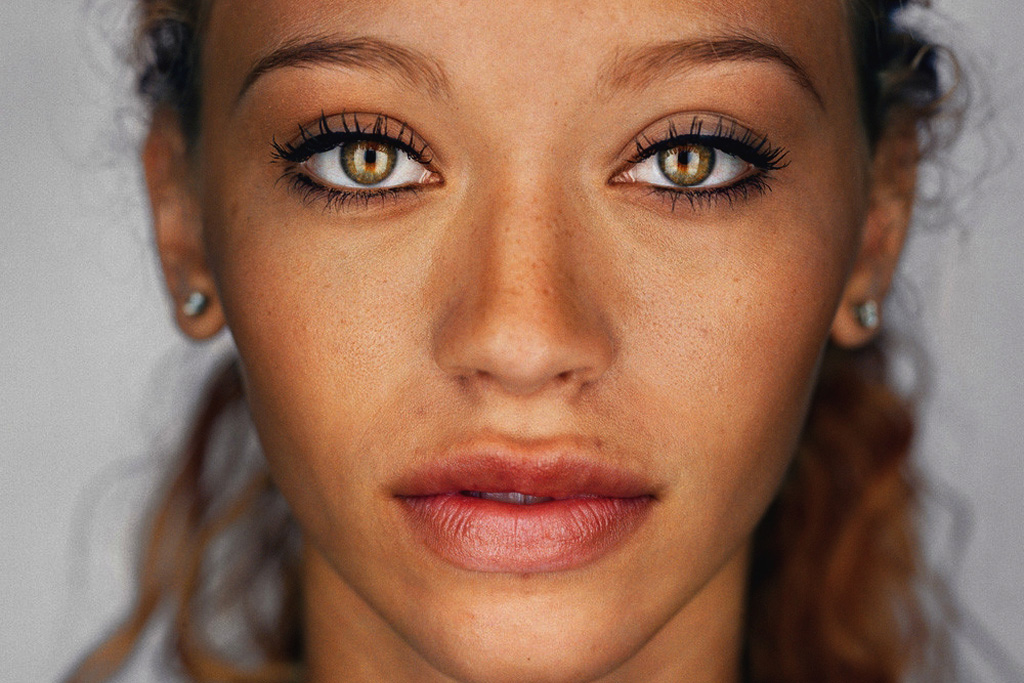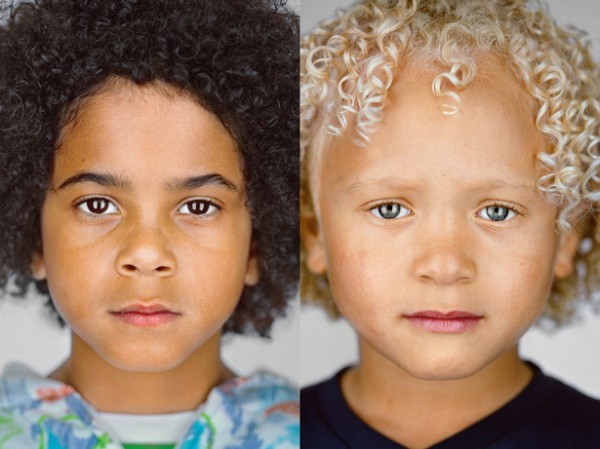America is becoming more colorful. The 2010 US Census predicted that whites would no longer be the majority race in America by 2043, but that statistic only tells a very small part of the tale: Not only are our demographics shifting, but our very conception of race is shifting as well. For their 125th anniversary issue, National Geographic hired famed portrait photographer Martin Schoeller to take portraits of biracial or mixed-race people, to give us a sense of what more and more people are going to look like as the racial lines become more blurred.

Images like this one are making their way around the internet now, often with the caption, “This is what America will look like in 2050.” But that’s not really the statement National Geographic is making. They’re instead pointing to the fact that the first time the US Census provided an option where you could check two boxes under the “race” category was in 2000. That year, 6.8 million people did so. By 2010, the number had jumped closer to 9 million, making it one of the fastest-growing categories.
While the numbers of mixed-race people are definitely growing, the jump between 2000 and 2010 may be less of an indication of the growth in numbers of mixed-race people, and may be more indicative of our collective willingness to point to our mixed-race status. Our identities are becoming much more complicated than simple matters of lineage or race.
The millennial generation in particular has blurred the lines between races like never before in America. Our kids look increasingly like the kids pictured above, and as the group of Americans who are a generation removed from the Civil Rights era, we don’t remember the divisions between races with the same intensity. This isn’t to whitewash things and suggest there aren’t still very real racial divides in America — just because we’re becoming ‘less white’ as a nation doesn’t mean white Americans don’t still have significant structural and institutional advantages over minorities. But the lines are becoming so blurred that, in the near future, the distinctions are going to be functionally meaningless.
My 4-year-old nephew is mixed race: He combines my sister’s Irish/Scottish/German heritage (I like to think my ancestors were just doing a tour of northern white drinking cultures) with my brother-in-law’s indigenous Salvadoran heritage. As a result, Ali, my nephew, has a face that looks a lot like mine did at his age, with skin that’s much closer to his dad’s dark brown complexion. His hair doesn’t grow straight and blonde like the rest of the Hershbergers, but dark and curly.
Not only is he going to have a much different life than I did growing up in pasty-white suburbia, but he’s going to grow up in a much different America. For one thing, he’s not going to feel as alone as the multiracial/multiethnic children of the past (Barack Obama being the most prominent example).
Source: Wall Street Journal
He’s going to be two generations removed from the grotesque miscegenation laws of the Civil Rights era, and is going to know plenty of other children of mixed race. But it’s still going to be a complicated future: He will very likely be forced to “code-switch” between cultures — or speak in one way when around whites, another while around other hispanics. He’s also more likely to be discriminated against by police.
There are still huge racial wealth gaps, as well as racial gaps in homeownership and achievement. Black men are still facing a justice system that’s very much skewed against their favor, and black and hispanic Americans still have much higher unemployment levels than whites or Asians. Then there’s our catastrophic, racist drug war.
So while the portraits from National Geographic are beautiful (if you want to learn about the actual races of each of the people in the portraits, NatGeo put together an excellent interactive page), our take away shouldn’t be, “This is where we’re headed if we just keep on banging each other!”
The racial disparities in this country are, sadly, too deep and entrenched to be simply fucked away. We’re going to have to dismantle the nightmare that is the drug war, we’re going to have to institute more effective anti-discrimination and poverty-fighting policies, and we’re going to have to change our attitudes.
But the NatGeo pictures do demonstrate that our attitudes are already changing. We’re headed towards a less segregated, more colorful world. America will probably never become ‘post-racial,’ as many people claimed it was upon the election of Barack Obama, but it can — it will — become more multiracial. And that can only be a good thing.



